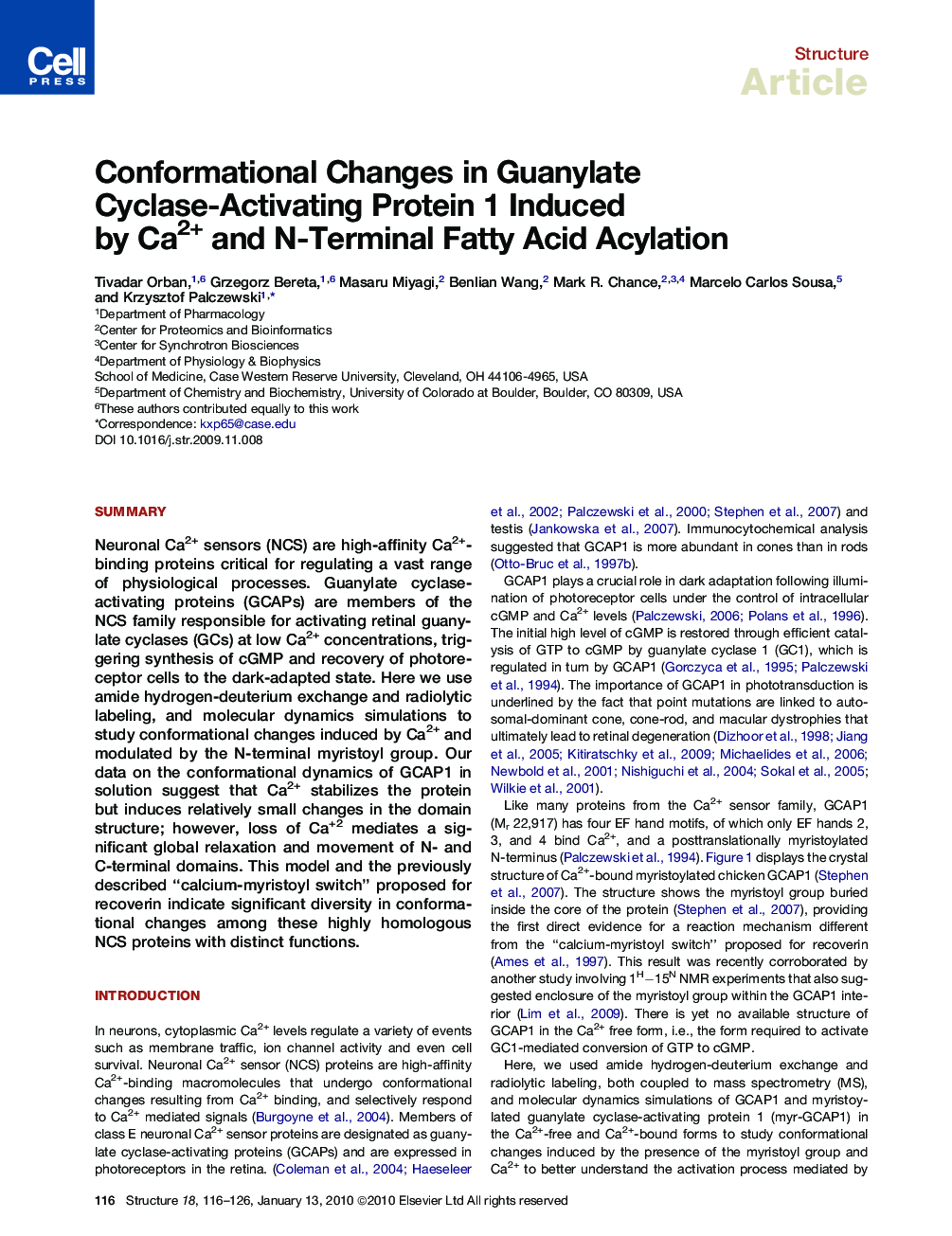| Article ID | Journal | Published Year | Pages | File Type |
|---|---|---|---|---|
| 2029972 | Structure | 2010 | 11 Pages |
SummaryNeuronal Ca2+ sensors (NCS) are high-affinity Ca2+-binding proteins critical for regulating a vast range of physiological processes. Guanylate cyclase-activating proteins (GCAPs) are members of the NCS family responsible for activating retinal guanylate cyclases (GCs) at low Ca2+ concentrations, triggering synthesis of cGMP and recovery of photoreceptor cells to the dark-adapted state. Here we use amide hydrogen-deuterium exchange and radiolytic labeling, and molecular dynamics simulations to study conformational changes induced by Ca2+ and modulated by the N-terminal myristoyl group. Our data on the conformational dynamics of GCAP1 in solution suggest that Ca2+ stabilizes the protein but induces relatively small changes in the domain structure; however, loss of Ca+2 mediates a significant global relaxation and movement of N- and C-terminal domains. This model and the previously described “calcium-myristoyl switch” proposed for recoverin indicate significant diversity in conformational changes among these highly homologous NCS proteins with distinct functions.
Graphical abstractFigure optionsDownload full-size imageDownload high-quality image (387 K)Download as PowerPoint slide
